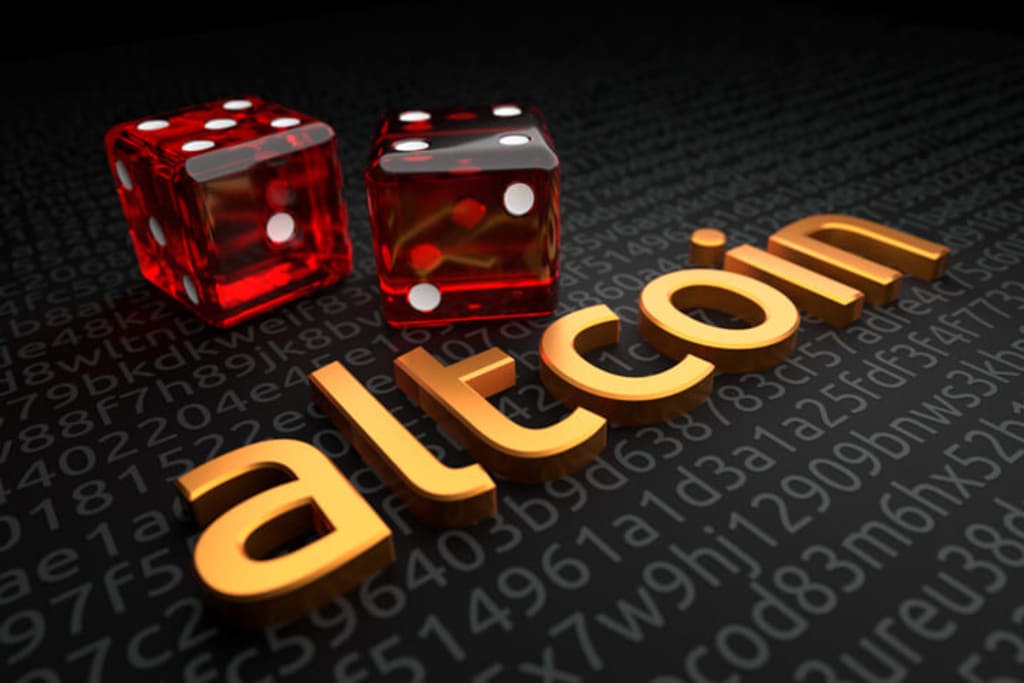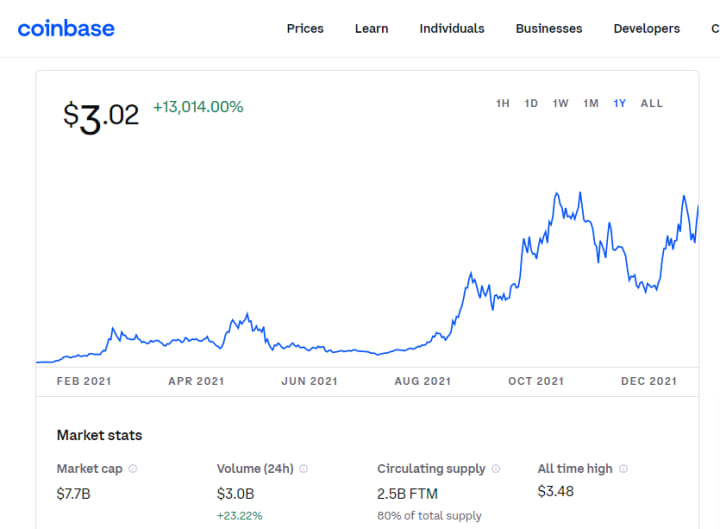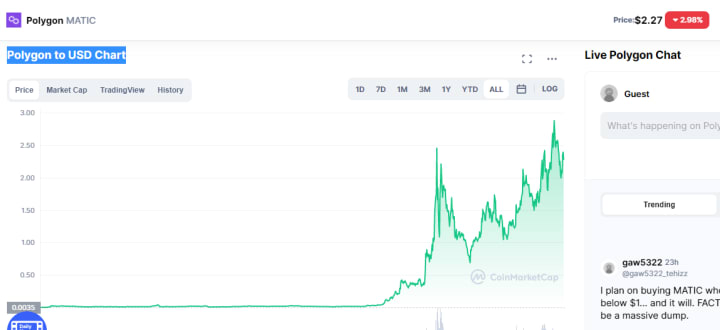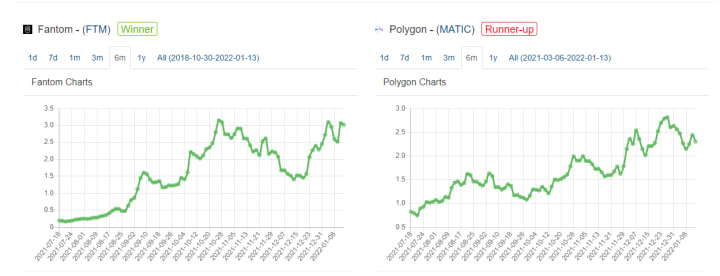The Difference Between Fantom (FTM) & Polygon (MATIC)
Many cryptocurrency investors wonder what the difference between FTM and MATIC is. They want to know which is the better investment.

Despite their differences, both are worthy investments, but do the research and only buy from a reputable exchange.
Cryptocurrency Overview
If you were considering cryptocurrencies to invest your money, the first thing to think about is what type of cryptocurrency in which you want to invest. There are over 2,000 different types of cryptocurrencies. Some currencies you may be interested in could include Bitcoin (BTC) and Ethereum (ETH), which use staking to validate transactions.
The Motley Fool answers the question, What Is Staking, like this. “But what is crypto staking? Staking cryptocurrencies is a process that involves committing your crypto assets to support a blockchain network and confirm transactions.”
Validating transactions for these coins use a lot of energy, more commonly known as "gas fees."
What Is Cryptocurrency?
To explain the difference between FTM and MATIC, you must first understand how crypto works.
Cryptocurrencies are digital forms of money stored in public ledgers called the blockchain. This is a distributed database that records every transaction made using the currency and allows transactions without a third party. The concept was pioneered in 2008 by Satoshi Nakamoto, who remains anonymous.
So, then, that raises another question. What is blockchain?
IBM says, “Blockchain is a shared, immutable ledger that facilitates the process of recording transactions and tracking assets in a business network. An asset can be tangible or intangible (virtual). Virtually anything of value can be tracked and traded on a blockchain network, reducing risk and cutting costs for all involved.”
What Is Fantom (FTM)?
Fantom (FTM) is a blockchain protocol that powers the FTM cryptocurrency and its services. The blockchain protocol is decentralized, meaning that any company that wants to build on it will not need to be hosted by a specific company.
This means that when you use one of the services built on top of the blockchain, you don't have to trust the platform or company providing it with your money. Instead, you can use FTM without having to trust another entity. This system is more secure than traditional cryptocurrencies and payment methods that rely on third-party companies for security.
Of course, the best source to answer the question is the “horse’s mouth” or the Fantom website.
Fantom’s website says, “Fantom is a high-performance, scalable, and secure smart-contract platform. It is designed to overcome the limitations of previous generation blockchain platforms. Fantom is permissionless, decentralized, and open-source.”
CoinMarketCap.com states, “The live Fantom price today is 3.01 USD with a 24-hour trading volume of $2,984,587,403 USD. We update our FTM to USD price in real-time. Fantom is up 1.95% in the last 24 hours. The current CoinMarketCap ranking is #26, with a live market cap of $7,657,657,039 USD.”
It is vital to note that $3.02 is only 12% off its all-time-high (ATH) of $3.48.

What Is Polygon (Matic)?
Polygon (Matic) is a digital currency that uses blockchain technology to provide secure, decentralized financial transactions. The Polygon coin is being used for payments and rewards in the platform's games ecosystem.
It was first released on 18 March 2018, with an initial price of $0.10 per coin; currently, it is trading at $2.28 (14 January 22). However, it reached an ATH of $2.87 the day after Christmas 21. That’s a market cap of 3.21 billion USD.

The cryptocurrency started out looking like any other altcoin. However, it quickly gained traction by offering its unique features, such as giving you the ability to spend your coins while they're still locked up (Proof-of-Stake) until you want them back or earn extra tokens when playing their game.
The Polygon Network is a type of cryptocurrency with its Blockchain. This means it can't be mined, and there are no transaction fees for transferring the tokens from one account to another.
So, if you look at these two side-by-side for the previous six months, FTM is the winner, though an investment in either would make you a winner. However, as they say, “past performance is not necessarily an indicator of future results.”

An Explanation of the Differences Between These Two AltCoins
The Fantom blockchain is Proof-of-Stake (PoS), whereas Matic is Delegated Proof-of-Stake (DPoS). That’s not much of a difference. However, PoS uses stakers (token owners) to verify the transaction, whereas DPoS uses “elected or delegated” users.
Fantom uses directed acyclic graph (DAG) technology to process infinite transactions per second, giving it low latency and high throughput capabilities.
In contrast, MATIC's focus is on scaling existing cryptocurrencies. The Polygon Network (MATIC) focuses on providing faster staking without sacrificing decentralization, whereas the Fantom blockchain is built on DAG technology, which offers faster transactions and lowers fees.
Both technologies offer greater scalability to existing blockchains. For example, Fantom's DAG technology is free and quick to set up.
In contrast, the Polygon Network, which is quickly becoming better-known as MATIC, allows other cryptocurrencies to scale by providing a full sidechain that connects the Ethereum Mainnet to the Polygon Network.
The way one Reddit subscriber, Jekpopulous2, explained the difference is “Fantom is a DAG that executes smart contracts...a general purpose layer 1 solution. Matic/Polygon is trying to interconnect the layer 2 (L2) ecosystem (zk, optimism, validium, plasma) on Etheruem [sic]. It’s a layer 2 scaling solution.”
“DAG is a data modeling or structuring tool typically used in cryptocurrencies. Unlike a blockchain, which consists of blocks, directed acyclic graphs have vertices and edges. Thus, crypto transactions are recorded as vertices.” — Cointelegraph.
DAG is better suited to process a high volume of transactions and micro-transactions due to its increased scaling efficiency and its ability to reduce or eliminate “gas” fees.
Final Thoughts
Cryptocurrencies are a new type of currency that is becoming more and more popular by the day. However, despite their rising popularity, many people still don't fully understand what cryptocurrency is and how they differ from traditional currencies.
DISCLAIMER: This article is for entertainment and informational purposes only. It should not be considered financial or legal advice. Not all information will be accurate. I am not a financial adviser and anything I propose should be considered friendly banter to show you what is possible if you invest your money in these vehicles. However, there are no guarantees. Consult a financial professional before making any significant financial decisions.
#Cryptocurrency #FTM $FTM #MATIC #Polygon #ETH #Bitcoin

Stephen Dalton is a retired US Army First Sergeant with a degree in journalism from the University of Maryland and a Certified US English Chicago Manual of Style Editor. Also, a Top Writer in Nutrition, Travel, Fiction, Transportation, VR, NFL, Design, Creativity, and Short Story.
If you found this information helpful, feel free to "heart" and leave a tip so that I may continue to write unencumbered and pay the rent. Thank you.
About the Creator
Enjoyed the story? Support the Creator.
Subscribe for free to receive all their stories in your feed. You could also pledge your support or give them a one-off tip, letting them know you appreciate their work.






Comments
There are no comments for this story
Be the first to respond and start the conversation.